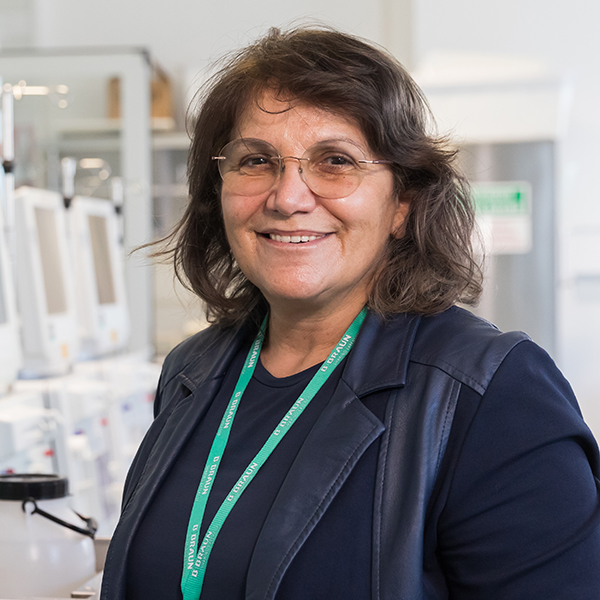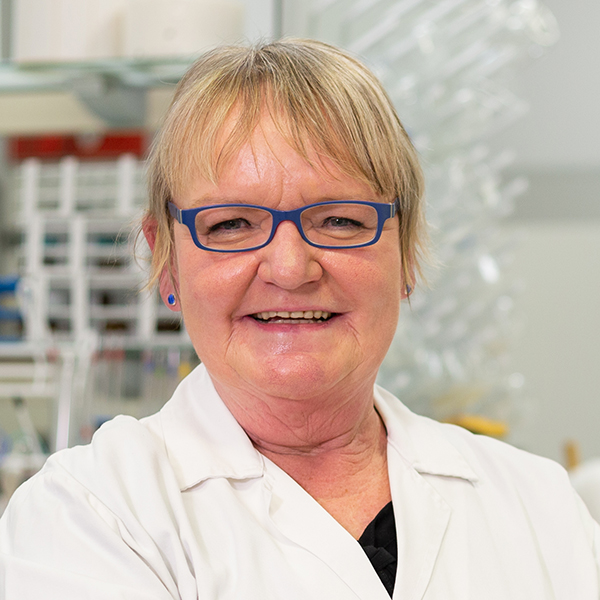No content results match your keyword.
Content
You have successfully logged out.
Not registered yet?
Many paths to innovation
Innovations and creative ideas are essential for progress in medical care. For companies, it is more important than ever to create a climate in which new things can be discovered and flourish. Three international examples show the different approaches B. Braun is taking to overcome this challenge.
Dr. Giuliana Gavioli, Senior Vice President Research & Development at B. Braun Avitum, is a distinguished expert. She studied medical technology and wrote her doctorate about the neurological aspects of artificial nutrition. She has worked at B. Braun since 1991, where her responsibilities include the worldwide registration of new products. Today, Gavioli works as a visiting professor at the University of Modena and leads a large research team at B. Braun Avitum in nearby Mirandola – one of the largest centers of medical technology in the world. “Innovation processes in the medical device business are often very complex because this field is highly regulated for understandable reasons, and very high standards for product safety apply,” says Dr. Gavioli.

“However, every process logically begins with an idea. For example, we work with start-ups and can take on the role of an experienced senior partner here, since we have a great deal of experience with patenting and registration. For us, however, it’s more common for the innovation idea to arise directly from one of our usability studies.”
“In particularly severe cases, however, dialysis isn't the only treatment needed. If lung failure is also involved, the blood must also be externally oxygenated,” explains Gavioli. “In conversations with critical care physicians and nurses, we came to understand that both procedures can be done well individually, but that the necessary combination often leads to stress and is an unnecessary burden on the patient.”
So, the idea that both the removal of toxins from the blood and its enrichment with oxygen could be performed with the same device was proposed. “What followed was a very intense research effort by a team of about 30 people, including software and hardware developers, technicians and physicians, experts in patents and registration,” Dr. Gavioli recalls. “We started in 2015; by 2019 we had approval for the European market.” Then came COVID-19 – and although it wasn’t planned that way, the B. Braun OMNI (ECCO2R), the name of the acute dialysis machine, was suddenly in demand in all intensive care units.
This is because multiple organ failure affecting the lungs is one of the most common complications in severe COVID-19 infections. The importance of this system for the critical care of COVID-19 patients can also be seen in the fact that the registration process in China went unusually fast. “Normally, it takes around four years for a new product to be approved in China. With the B. Braun OMNI, it was done in one year,” says Dr. Gavioli. “I’m very proud of the team - everyone was aware that they were working on a device that could save lives or at least make critical care dramatically easier.”
The CEO of neuroloop, Dr. Michael Lauk, explains: “The whole idea goes back to research that was conducted here at the University of Freiburg in the microsystems engineering and neurosurgery PhD departments. The vagus nerve is, in very simplified terms, a kind of data highway that runs through the entire body. Quite a few autonomic body functions – heartbeat, blood pressure, breathing, digestion – are controlled by the vagus nerve. By stimulating the vagus nerve, it might be possible to treat diseases such as high blood pressure very precisely, without pharmaceutical intervention."
The problem here is that because the vagus nerve controls such different processes, targeted stimulation of a single function has been impossible until now – for example, by influencing blood pressure, the heartbeat or digestion would also have been manipulated in some patients, or side effects such as a change in voice could occur. However, the research from Freiburg provided a remedy. A type of sleeve with a very large number of contacts to sheath the nerve was developed, and it can then be precisely controlled. Neuroloop was founded in 2016, the plan was to develop just such a device. Dr. Michael Lauk, who previously worked at another medical technology start-up in the U.S., returned to his hometown of Freiburg to do it.
CEO of neuroloop and CDO of B. Braun
“The cooperation with B. Braun was something special and has played a decisive role in the development of our product. B. Braun was involved in neuroloop from the very beginning, which saved us the hassle of organizing financing rounds. This allowed the team to focus on product development while relying on B. Braun's expertise.”

What’s special about Neuroloop is that B. Braun was on board as a partner from the very beginning. The cooperation between B. Braun and neuroloop is about combining the best of two worlds. “On the one hand, we will continue to be a start-up,” says Dr. Lauk. “We’re still small, with 45 people working for us, many of them part-time. Some employees came to us because we are very open about offering these part-time models. Speed and agility are our top priorities. So we don't have fixed jobs, and hierarchies and titles are pretty irrelevant, the team is 100% focused on our common goals. This gives us speed during the development process. We’re now in our sixth year, the first-in-human studies are being done right now, and we expect to go to market with an application for hypertension in two years.”
But Neuroloop is not just a start-up. “We see ourselves as part of B. Braun,” says Dr. Lauk, who also heads the B. Braun New Ventures robotics company and has also been B. Braun’s Chief Digital Officer since 2021. “This means that we not only have a good idea, we can also implement it. As a start-up, we would normally have great difficulties especially with scaling issues, e.g., purchasing or production. In the supply chain, we would usually be at the very bottom of the barrel. With B. Braun, we have a powerful player on our side who knows how to scale production and supports us in international marketing and sales. You can’t ask for more than that.”
With a doctorate in chemistry, she has been working for B. Braun since 1999 and now heads a research team on surgical technology, which, interestingly enough, is mainly made up of women. “Not that we planned it that way, but the women just often turned out to be the best,” she says. Dr. Weis cites close cooperation with the numerous universities, colleges, and hospitals in the greater Barcelona area as the most important driver of innovation. “Together with the Universitat Politècnica De Catalunya in Barcelona, for example, we developed a technology in which nanoparticles of gold can be activated using laser radiation so they emit heat. This way, bacteria can be killed using physics,” explains Dr. Weis. The initial stimulus for this research, the results of which have already been protected by several patents, actually came about through a dialog.

“Together with researchers from the University of Technology, who we’ve been collaborating with for years, we discussed possible applications for this technology. It was a mutual give and take, our respective expertise and experience complemented each other ideally.”
Your feedback matters! Participate in our customer survey to help us enhance our website, products and services. Thank you for your support!